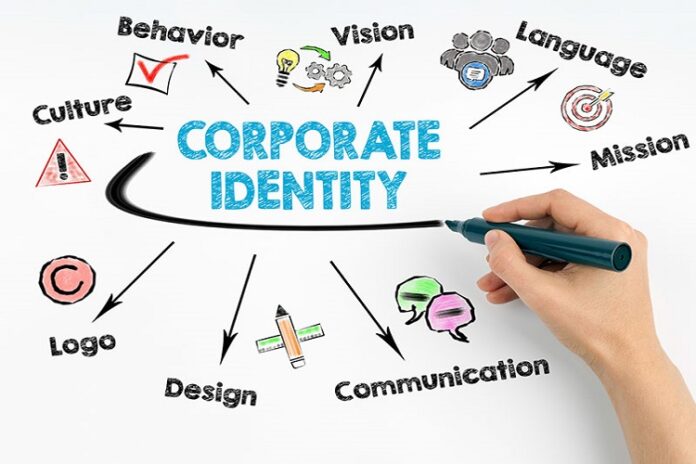Corporate identity plays a crucial role in shaping the perception and reputation of a business. It encompasses various elements that define a company’s image and helps it establish a unique and recognizable presence in the market. Unlock the Power of Corporate Identity: Discover How It’s Formed by visiting this website Transfer-Credit.org.
Every aspect contributes to forming a strong corporate identity, from its visual representation to its values and mission. This article will explore the key components and the process through which corporate identity is formed.
Visual Identity: Logo, Colors, and Design
One of the most recognizable aspects of corporate identity is the visual representation of a company. This includes the logo, colors, typography, and overall design aesthetics. A well-designed logo creates an immediate connection with the brand and serves as a visual symbol that embodies its essence. The choice of colors and design elements should align with the company’s values and target audience, evoking the desired emotions and conveying the brand’s personality.
Brand Messaging: Mission, Vision, and Values
The messaging aspect of corporate identity revolves around the company’s mission, vision, and values. These elements define the purpose and direction of the business. The mission statement communicates the company’s primary objective and the value it aims to deliver to its customers. The vision statement outlines the long-term goals and aspirations. Values are the guiding principles governing the company’s behavior and decision-making processes.
Customer Experience: Products, Services, and Interactions
A crucial factor in shaping corporate identity is the customer experience. How a company interacts with its customers through its products, services, and various touchpoints contribute to how the brand is perceived. Transform Your Brand’s Perception. Learn How Corporate Identity is Formed and get more information at JobsInMaconGa.com.
A positive and consistent customer experience builds trust and loyalty, enhancing corporate identity. Companies must focus on delivering high-quality products, personalized services, and seamless interactions to create a strong brand image.
Employee Engagement: Culture and Internal Communication
Employees are the ambassadors of a company’s corporate identity. Their engagement and alignment with the brand’s values and culture are vital in shaping the overall identity. A strong corporate culture fosters employee satisfaction, productivity, and loyalty.
Effective internal communication ensures that employees understand and embrace the brand’s mission, vision, and values, enabling them to act as brand advocates within and outside the organization.
Stakeholder Perception: Reputation and Public Relations
Corporate identity is influenced by how stakeholders perceive a company. A positive reputation built through ethical practices, transparent communication, and strong public relations efforts enhances corporate identity.
Companies must actively manage their relationships with stakeholders, including customers, investors, suppliers, and the public. Engaging in open dialogue, addressing concerns, and maintaining a consistent brand image contribute to shaping a favorable perception in the market.
Corporate Social Responsibility: Giving Back to Society
In today’s socially conscious world, corporate social responsibility (CSR) plays a significant role in corporate identity formation. Companies that actively engage in initiatives that benefit society and the environment enhance their reputation and build a positive identity. Embracing sustainability, supporting community programs, and addressing social issues align the brand with values that resonate with customers and stakeholders.
Integration and Consistency: Coherence Across Channels
To create a strong and cohesive corporate identity, ensuring integration and consistency across all channels is essential. This includes maintaining a unified visual identity, aligning messaging across various marketing and communication platforms, and delivering a consistent customer experience. When all elements harmonize harmoniously, it reinforces the brand’s identity and creates a memorable impression.
Adaptation and Evolution: Responding to Changing Needs
Corporate identity should not remain static. Companies must adapt and evolve their identity to stay relevant and meet changing market needs. As the business landscape evolves, it is essential to assess and adjust the visual identity, messaging, and customer experience to reflect the current trends and customer preferences. By remaining agile and responsive, companies can ensure their corporate identity stays fresh and resonates with their target audience.
Measuring Corporate Identity: Key Metrics for Evaluation
Measuring the effectiveness of corporate identity is crucial for ongoing improvement. Several metrics can be used to evaluate the impact of corporate identity efforts. These include brand awareness, customer satisfaction, employee engagement, reputation scores, and market share. Regular monitoring and analysis of these metrics provide valuable insights into the success and areas for improvement in shaping corporate identity.
Conclusion
Corporate identity is the sum of all the elements that define a company’s image and reputation. Every aspect contributes to a strong corporate identity, from visual identity to brand messaging, customer experience, employee engagement, and stakeholder perception to corporate social responsibility. By carefully crafting and consistently reinforcing these elements, businesses can establish a unique and recognizable presence in the market, fostering trust, loyalty, and long-term success. Gain Insights into the Art and Science of Corporate Identity. Visit Rea-Evolution.com Today.










